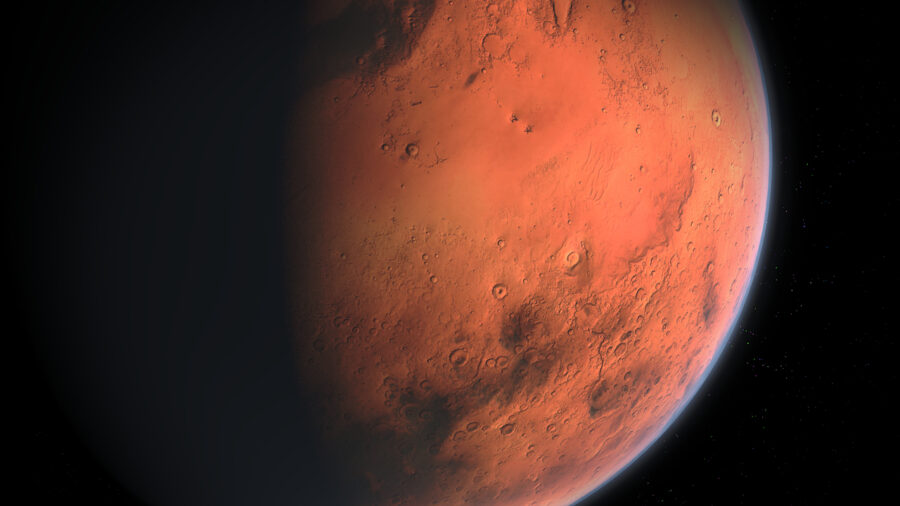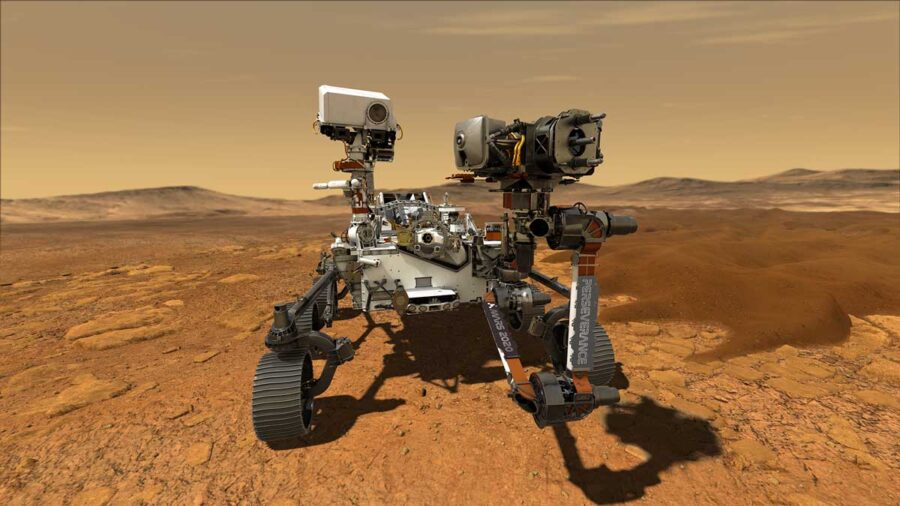Blue Sunset On Mars Stuns In Incredible Photo

Admittedly, our universe brims with mesmerizing celestial wonders. None perhaps more stunning than the recent blue sunset on Mars, an alluring enigma indeed. ScienceAlert reports that, on July 4th, 2023, a day on which the Perseverance Rover marked its 82nd consecutive day on the Red Planet, the robot’s exploration offered us an especially interesting glimpse of Mars. While darkness swallowed the Martian sky, the rover’s left navigation camera zoomed in on the horizon, capturing an ethereal nighttime wonder entirely different from what we witness on Earth.
NASA’s Perseverance Rover captured a stunning image of a sunset on Mars.
What science explains this Martian marvel?
First, as Mars lies much further from the Sun than our own Pale Blue Dot, the Red Planet (with the blue sunset) does not enjoy the same luminosity as we do on Earth. How much less light from the Sun makes its way to Mars? Less than half the sunlight we sunbathe with here on our own, much warmer planet.
The point is that the interactions between sunlight and the Martian atmosphere eventuate entirely different visual effects than even the strangest Earthly phenomena, such as blue sunsets.
What this most saliently means is that the Martian temperature is significantly lower than Earth’s. It also necessitates entirely different visual spectacles. Moreover, the atmosphere on Mars is razor-thin. Only about one percent as thick as Earth’s atmosphere, the “air” on Mars comprises mainly carbon dioxide sprinkled with nitrogen and trace oxygen.
The point is that the interactions between sunlight and the Martian atmosphere eventuate entirely different visual effects than even the strangest Earthly phenomena, such as blue sunsets.
And how does our planet end up with daily reddish-yellow sunsets and sunrises? Because the Sun must penetrate much thicker atmospheric walls in the Earth’s atmosphere, a longer journey filtering out the blue and violet wavelengths, leading to the familiar, warm hues of oranges and reds our sunsets/sunrises involve. All of which is a byproduct of the oxygen, nitrogen, and other atmospheric particulates scattering sunlight in our atmosphere.

Whereas the Martian sky dances to a much different tune–one reminiscent of science fiction instead of just science…science. Its atmosphere is crammed with iron-rich dust, which disperses the lower-frequency red light during daytime. However, come twilight, the red illumination filters out, making way for breathtaking blue sunsets.
An atmospheric scientist at Texas A&M University, Mark Lemmon, elaborated that this extremely fine dust in the Martian atmosphere, being extremely porous, facilitates the permeation of blue light. The blue light, he went on, lingers in the direction of the Sun upon scattering.
And linger it does–sometimes for hours, following sunsets or sunrises. Because of this, the blue light consistently reveals the dust high up in the Martian atmosphere, making it a boon for photography on the red planet. It is a boon for science lovers, who get to enjoy incredible, high-definition pictures of blue sunsets.
An atmospheric scientist at Texas A&M University, Mark Lemmon, elaborated that this extremely fine dust in the Martian atmosphere, being extremely porous, facilitates the permeation of blue light.
Earlier this year, the Curiosity rover, Perseverance’s predecessor, captured an astonishing image, one showcasing sunbeams slicing through the evening Martian clouds with unheard-of clarity. The photo revealed previously unknown information surrounding particle size in the Martian atmosphere, as well as how its cloud cover develops.
Ultimately, the blue sunset on Mars embodies the best of scientific development–when high-tech discoveries pair with aesthetic beauty. This fusion both furthers science and wins public attention. And we have only the Red Planet and its incredible atmosphere to thank.












